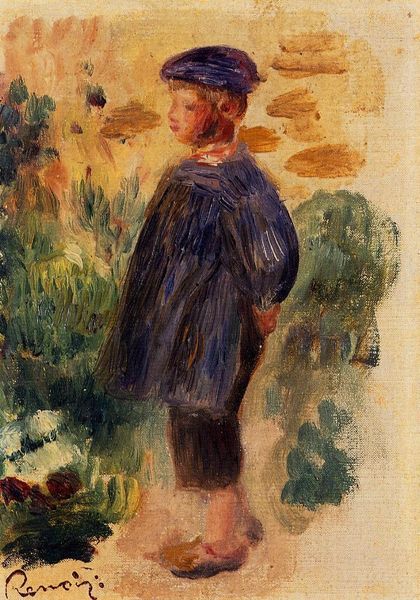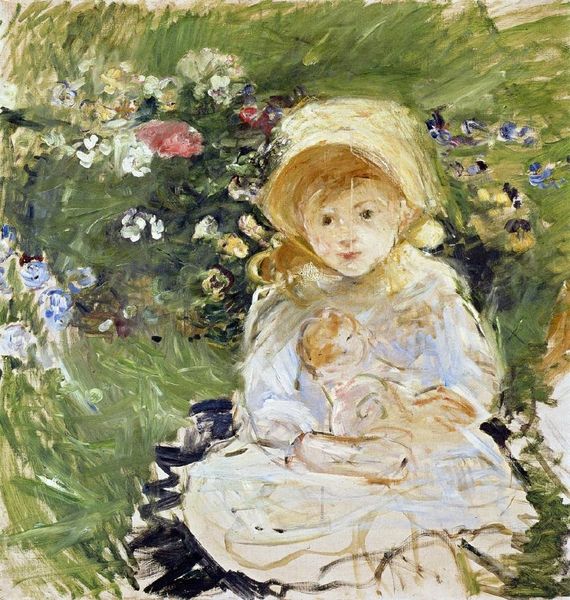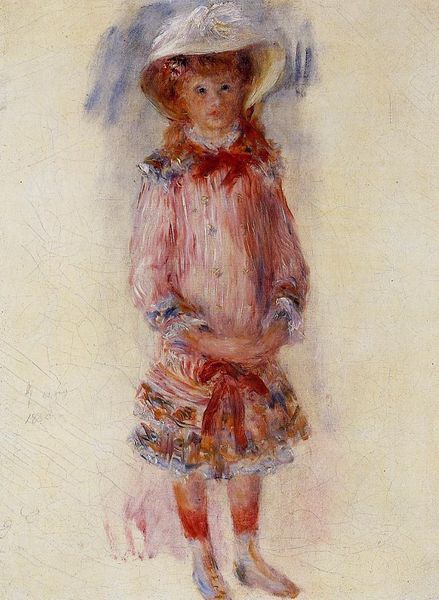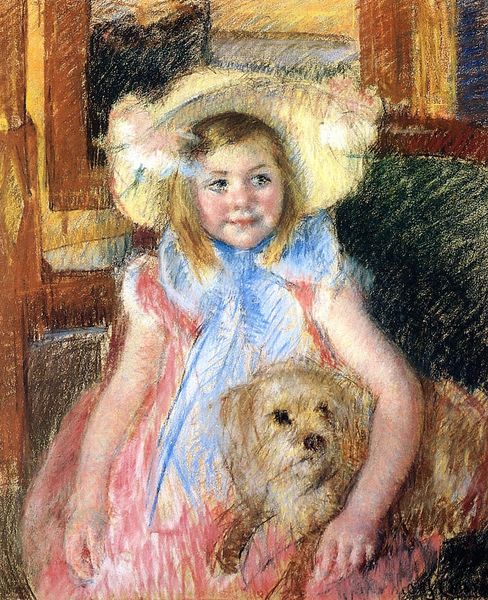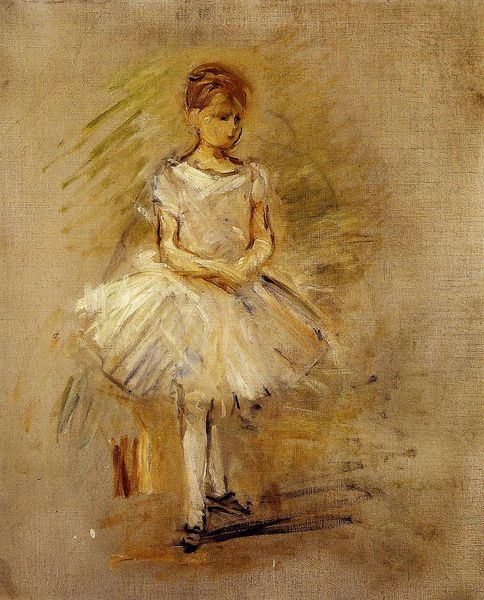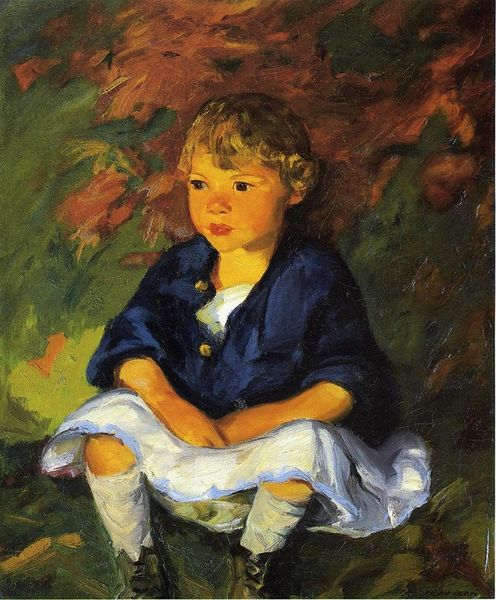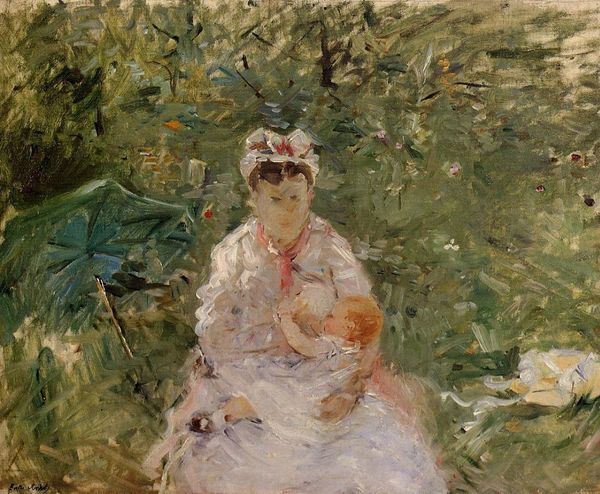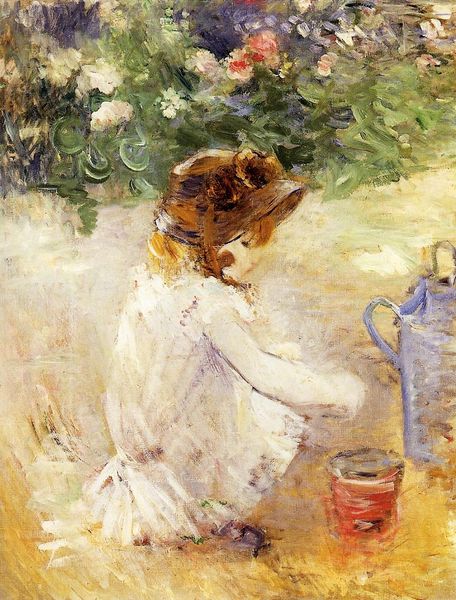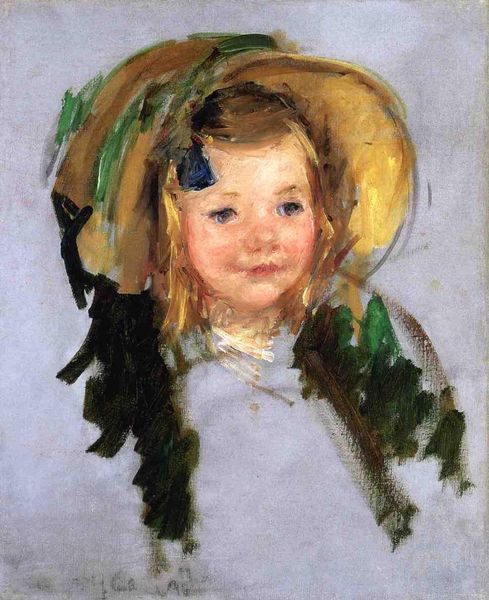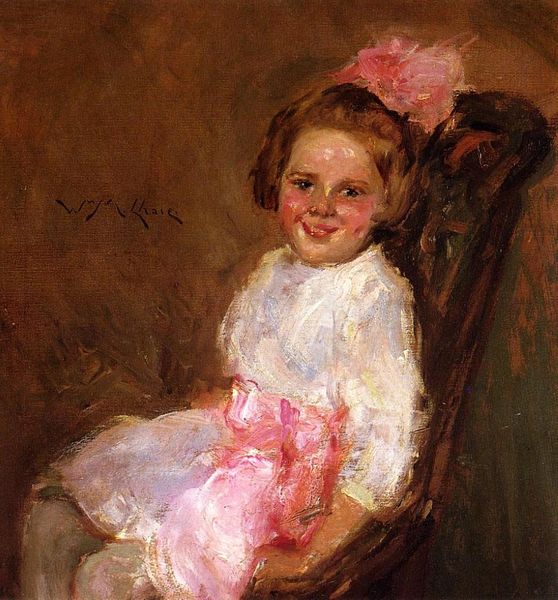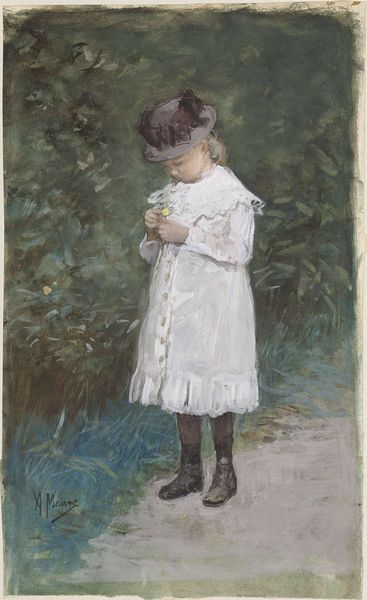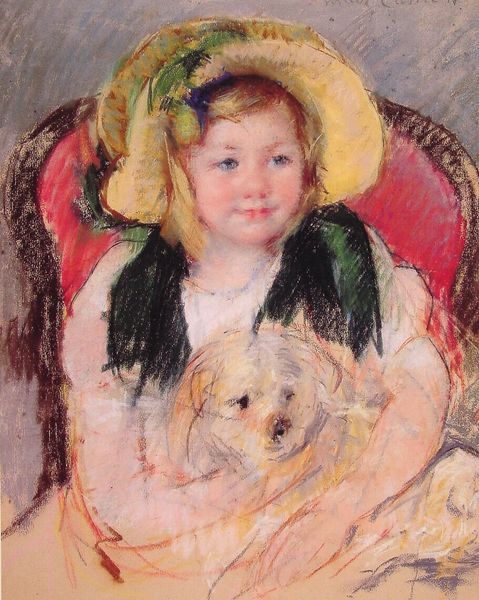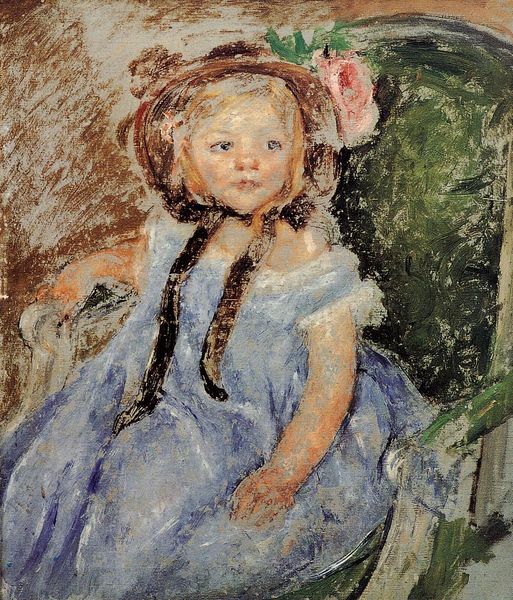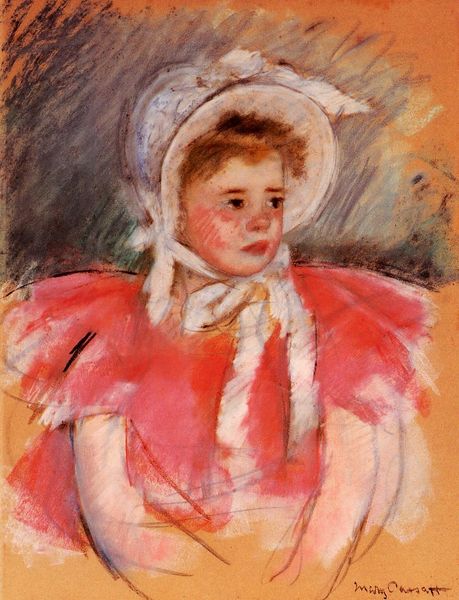
Copyright: Public domain
Curator: Looking at Eugène Boudin’s “Portrait of a Little Girl,” painted in 1882, I immediately notice the pervasive mood of introspection and the subject's apparent unease. The broad brushstrokes and muted color palette suggest a dreamlike atmosphere, slightly blurring the details of the surroundings. Editor: There's something unsettling in how casually a child's vulnerability is displayed for public consumption. You see that basket in her hand? We should be considering child labor practices, gendered expectations, the historical erasure inherent to portraits of bourgeois childhood that largely center white, middle-class experiences... Curator: Setting that aside for now, wouldn’t you say the girl’s outfit also signifies cultural continuity? It's difficult to date exactly, but the dress, while loose fitting, maintains a high neckline typical of the era's more prudish expectations. Also, she appears with bare feet and legs as a form of “playtime” with gender constrictions removed. Editor: I agree about the dress. But I think reading the image in this context can offer insight to how the social constraints surrounding children's appearances reinforced larger societal power dynamics. Consider how artistic representation during this period contributed to both defining and normalizing a particular image of idealized youth against which other realities are often measured or found wanting. Curator: Indeed. And perhaps that idealized youthfulness also explains the overall visual tone. Notice the way the colors are blended; soft brushstrokes render the figure almost translucent. It invokes transience. The impressionists did embrace these ideas... Boudin clearly echoes the French Barbizon School’s plein-air paintings here to explore such feelings. Editor: Certainly. This historical artistic rendering participates in the construction of ideas that are anything but innocent when you analyze how it functions socially and historically. What would the history of Childhood Studies, even social mobility within French history be, if children of all racial backgrounds and socioeconomic identities were included? What assumptions get built into cultural values surrounding childhood if some portraits dominate over others? Curator: In other words, we may value certain images because of what they reinforce for our values regarding innocence and family? Regardless, there's undeniable melancholy present within the artwork, almost like a symbolic capture of fading youth, which then asks to be reflected across the painting. Editor: And the historical baggage that those visual conventions carry forward! Let us at least acknowledge them as we examine these kinds of period pieces and continue expanding access to the fine arts.
Comments
No comments
Be the first to comment and join the conversation on the ultimate creative platform.
